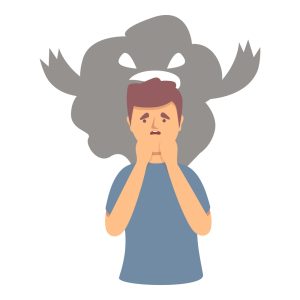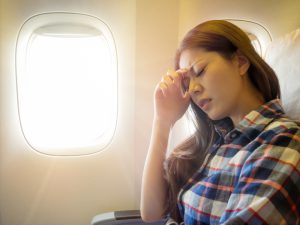Emotional Freedom Techniques (EFT) has shown considerable promise in alleviating phobias, a type of anxiety disorder characterized by an intense and irrational fear of specific situations, activities, or objects. This article explores the multifaceted approach of EFT in addressing phobias, highlighting its mechanisms, effectiveness, and practical application through various therapeutic frameworks.

Key Takeaways
- EFT provides rapid relief from phobia symptoms by desensitizing fear responses and enhancing confidence in handling anxiety-provoking situations.
- By focusing on acupressure points, EFT disrupts the conditioned fear responses, reducing the emotional intensity linked to phobias.
- Working with a trained EFT therapist is crucial as they tailor the technique to individual needs and ensure a supportive therapeutic environment.
- EFT can be effectively integrated with other therapeutic approaches like cognitive behavioral therapy to enhance treatment outcomes for phobias.
- Recent research and case studies underscore the success of EFT in treating phobias, noting significant improvements in symptoms and quality of life.
Understanding Phobias: Origins and Manifestations
Defining Phobias
Phobias are characterized by an intense and irrational fear of specific objects, situations, or activities. These fears are not just extreme but also deeply rooted in past experiences, traumatic events, or learned behaviors, leading to significant distress and avoidance behaviors.
Common Triggers and Symptoms
Phobias can manifest through various symptoms, which may include rapid heartbeat, shortness of breath, sweating, and trembling. Common triggers include heights, spiders, and flying, which can cause panic attacks and a strong desire to avoid the feared stimulus.
Biological and Psychological Foundations
Phobias often develop due to a combination of genetic, environmental, and psychological factors. Understanding these foundations is crucial for effective treatment. The biological aspect involves the brain’s response to fear, while the psychological aspect explores how past experiences shape fear responses.
The Principles of Emotional Freedom Techniques
Overview of EFT
Emotional Freedom Techniques (EFT) is a holistic healing method that integrates elements of traditional Chinese medicine and modern psychological acupressure techniques. EFT is designed to address emotional and psychological issues by tapping on specific acupressure points while focusing on particular emotional concerns.
Key Components of the Technique
EFT operates on several core principles that enhance its effectiveness. These include the identification and direct addressing of negative emotions, the physical interaction through tapping, and the cognitive reassessment of distressing situations.
The Role of Acupressure Points
The acupressure points used in EFT are critical to its success. These points, located on various parts of the body, are believed to be linked to the body’s energy flow, known as meridians. Tapping on these points while concentrating on emotional issues helps to release blockages in the energy system, facilitating healing and emotional freedom.
EFT in Action: Mechanisms and Effects
How EFT Targets Fear Responses

EFT operates on the premise that emotional distress is caused by disruptions in the body’s energy system. By tapping on specific acupressure points, EFT aims to restore the balance of energy and alleviate emotional distress. The act of tapping on these points is believed to send calming signals to the brain, reducing the intensity of negative emotions. This targeted approach directly addresses the fear responses associated with phobias, making it a potent tool for emotional regulation and fear management.
Neural and Emotional Rewiring
During an EFT session, individuals focus on their specific issue or problem while tapping on the designated points. This process helps to bring the issue to the surface and allows for the release of negative emotions, beliefs, and memories associated with it. By addressing these underlying emotional components, EFT aims to bring about emotional healing and create positive changes. The technique’s ability to rewire emotional responses is central to its effectiveness in treating phobias.
Case Studies: EFT Success Stories
EFT has been applied successfully in numerous cases, helping individuals overcome their phobias and regain control over their emotional responses. These success stories highlight the practical benefits and transformative potential of EFT in real-world scenarios. The following are some key outcomes observed in various case studies:
- Reduction in phobia-related anxiety
- Improved emotional regulation
- Enhanced overall well-being
Practical Application of EFT for Phobias
Step-by-Step EFT Process for Phobias
To effectively utilize EFT for phobias, a structured approach is essential. Begin by identifying the specific phobia and the associated emotional response. The process typically involves several steps:
- Acknowledgment of the emotional issue
- Identification of the acupressure points to be targeted
- Application of gentle tapping on these points while focusing on the phobia
- Vocal affirmation of acceptance despite the phobia
- Reassessment of emotional intensity and repetition if necessary
This methodical approach helps in desensitizing the fear response, enabling individuals to face previously daunting situations with increased confidence.
Role of a Trained EFT Therapist
Working with a trained EFT therapist is crucial for the successful application of EFT in treating phobias. A skilled therapist can provide necessary guidance, support, and customization of the technique to suit individual needs. They ensure that the process is conducted safely and effectively, maximizing the potential for improvement.
It’s important to note that while EFT can be a powerful tool in addressing phobias, it is recommended to work with a trained EFT therapist.
Creating a Supportive Environment
Creating a supportive environment is integral to the success of EFT for phobias. This involves establishing a safe space where individuals feel comfortable expressing their fears without judgment. Support from family, friends, and therapists plays a significant role in reinforcing the positive effects of EFT and encouraging continued progress.
Combining EFT with Other Therapeutic Approaches
Integrative Therapy Strategies
EFT can be effectively combined with other therapeutic approaches to create a holistic treatment plan. Depending on the needs of the individual, therapists may integrate EFT with techniques such as cognitive-behavioral therapy (CBT), exposure therapy, or mindfulness-based interventions. This integration allows for a more comprehensive approach to treating phobias, enhancing the effectiveness of each method.
Enhancing EFT with Cognitive Behavioral Techniques
EFT can be a valuable complement to cognitive-behavioral therapy (CBT). By integrating these two powerful techniques, therapists can address both the emotional and cognitive aspects of phobias. This dual approach not only helps in reducing the symptoms but also in altering the underlying thought patterns that contribute to the phobia.
Case Examples of Combined Therapies
Integrating EFT into therapy allows individuals to harness the benefits of this powerful technique alongside other therapeutic approaches. By working with experienced EFT therapists, individuals can embark on a transformative journey towards overcoming their phobias and achieving emotional freedom. The combination of EFT with other therapeutic modalities empowers individuals to address their phobias from multiple angles, leading to lasting change and personal growth.
Research and Evidence on EFT for Phobias
Recent Studies and Findings
Recent research has demonstrated that EFT can significantly reduce the intensity of phobic responses and enhance emotional well-being. Studies highlight the rapid effectiveness of EFT, often showing substantial improvement in phobia symptoms after just a few sessions. Notable findings include:
- A reduction in phobia-related anxiety
- Improved emotional regulation
- Decreased avoidance behaviors
Analysis of EFT’s Effectiveness
The analysis of various studies indicates that EFT is not only effective but also provides long-term benefits in managing phobias. It is crucial, however, to ensure that the therapy is administered by a trained professional to achieve optimal results. The structured approach of EFT, combined with its focus on acupressure points, contributes to its success in treating phobias.
Expert Opinions and Reviews
Experts in the field of psychological therapies have praised EFT for its innovative approach to treating phobias. They emphasize the importance of a supportive therapeutic environment and the role of a skilled practitioner. Reviews often point to the need for further research to fully understand the mechanisms behind EFT and to establish standardized guidelines for its practice.
Navigating Challenges and Limitations of EFT
Potential Obstacles in EFT Practice
While EFT has proven beneficial for many, certain obstacles can hinder its effectiveness. These include a lack of understanding of the technique, resistance from clients, and the variability in practitioner skill levels. Proper training and experience are crucial for practitioners to navigate these challenges effectively.
Addressing Complex Phobias
Complex phobias often require a multifaceted approach. EFT, while powerful, may not be sufficient alone. It is essential to integrate other therapeutic modalities to ensure comprehensive treatment. This integration allows for a more robust approach to tackling deep-seated phobias.
Ensuring Ethical and Effective Use
Ethical considerations are paramount in the practice of EFT. Practitioners must maintain high standards of professionalism and client care. It is vital to ensure that EFT is used appropriately and that clients are better prepared to navigate future challenges without reverting to old, unhealthy behaviors.
Conclusion

In conclusion, Emotional Freedom Techniques (EFT) has demonstrated considerable efficacy in addressing and alleviating phobias. Through the strategic tapping on acupressure points, EFT helps to disrupt the conditioned fear responses and reduce the emotional intensity linked to phobias. This technique not only desensitizes individuals to their fears but also empowers them to engage more fully in life without the constraints of overwhelming anxiety. It is, however, crucial to undertake EFT under the supervision of a trained therapist to ensure the process is tailored effectively to individual needs and to maximize the therapeutic benefits. The promising results from various case studies and research underscore the potential of EFT as a transformative tool for those struggling with phobias.
Please also review AIHCP’s EFT Practitioner Program. The program is online and independent study and open to qualified professionals seeking a four year certification as Emotional Freedom Technique Practitioner. EFT can help many deal with phobias, stress, anxiety and past trauma. Trained professionals can help guide many individuals to a world of self care that frees them from these types of ailments.
Frequently Asked Questions
What is EFT and how does it help with phobias?
Emotional Freedom Techniques (EFT) is a therapeutic approach that involves tapping on specific acupressure points on the body while focusing on a phobia or fear. This process helps to rewire the brain’s neural pathways and reduce the emotional intensity associated with the phobia, leading to a reduction in fear and anxiety.
Can EFT provide quick relief from phobias?
Yes, EFT can offer significant relief from phobias often in a relatively short period of time. It helps to desensitize the fear response, enabling individuals to handle previously anxiety-provoking situations with more ease and confidence.
Is it necessary to work with a trained EFT therapist?
While EFT can be practiced individually, it is recommended to work with a trained EFT therapist for guidance, especially for addressing specific phobias and individual needs. A skilled therapist can provide support and tailor the technique effectively.
What are the primary benefits of using EFT for phobias?
EFT can reduce anxiety and fear associated with specific triggers. By tapping on acupressure points while focusing on the phobic stimulus, EFT helps to rewire the brain’s response, allowing for gradual desensitization to the phobia and decreased anxiety levels.
Can EFT be combined with other therapeutic approaches?
Yes, EFT can be effectively combined with other therapeutic approaches such as cognitive behavioral therapy. This integrative strategy can enhance the effectiveness of EFT, providing a more comprehensive treatment for phobias.
What does research say about the effectiveness of EFT for phobias?
Research has shown promising results for EFT in treating phobias, with many individuals experiencing significant improvements in their symptoms. However, it is important to conduct EFT under the guidance of a qualified practitioner to ensure its effectiveness and safety.
Additional Resources
Leonard, J. (2019). “A guide to EFT tapping”. MedicalNewsToday. Access here
Broening, J, (2023). “EFT Revolution: Transforming Phobias with Emotional Freedom Techniques”. Quenza. Access here
Anthony, K. (2023). “EFT tapping focuses on tapping the 12 meridian points of the body to relieve symptoms of a negative experience or emotion.”. Healthline. Access here
Bach, D. et, al. (2019). “Clinical EFT (Emotional Freedom Techniques) Improves Multiple Physiological Markers of Health”. J Evid Based Integr Med. 2019; 24: 2515690X18823691. National Library of Medicine. Access here








